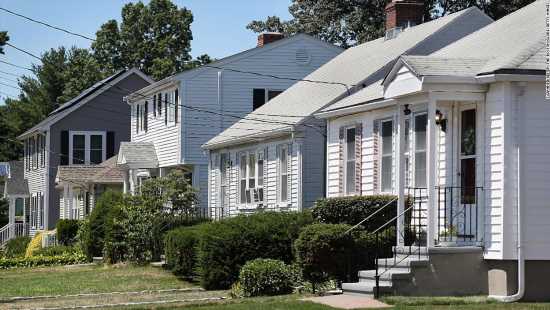Housing market may be slowing down but rents keep rising. Here's why
(CNN)Mortgage rates reached their highest level since 2008, inching closer to 6% this week, as it became clearer to investors that aggressive rate hikes from the Federal Reserve would continue.
The 30-year fixed-rate mortgage averaged 5.89% in the week ending September 8, up from 5.66% the week before, according to Freddie Mac. That is significantly higher than this time last year when it was 2.88%.
After starting the year at 3.22%, mortgage rates rose sharply during the first half of the year, hitting 5.81% in mid-June. But since then, concerns about the economy and the Federal Reserve’s mission to combat inflation have made them more volatile.
“Mortgage rates rose again as markets continue to manage the prospect of more aggressive monetary policy to combat elevated inflation,” said Sam Khater, Freddie Mac’s chief economist.
Rates had fallen in July and early August as recession fears took hold. But comments from Federal Reserve Chairman Jerome Powell at the central bank’s annual meeting in Jackson Hole in August refocused investors’ attention back on the Fed’s fight against inflation, pushing rates higher.
This week, investors looked for the release of the Fed’s Beige Book, which provides a regional pulse on the US economy and indicators of what may happen with interest rates at the Fed’s meeting at the end of September. Wednesday’s release indicated sustained price increases in all twelve Fed districts, though there was a moderating rate of increase in nine of these districts, said Jones.
“This could be an early sign of the eventual ease in inflation, which would precede slowed interest rate hikes,” said Hannah Jones, economic data analyst for Realtor.com.
The Federal Reserve does not set the interest rates borrowers pay on mortgages directly, but its actions influence them. Mortgage rates tend to track 10-year US Treasury bonds. As investors see or anticipate rate hikes, they often sell government bonds, which sends yields higher and with it, mortgage rates.
Market slows amid affordability challenges
As mortgage rates have moved higher and home prices remain near record highs, many home buyers have put their search on hold.
A year ago, a buyer who put 20% down on a median priced $390,000 home and financed the rest with a 30-year, fixed-rate mortgage at an average interest rate of 2.88% had a monthly mortgage payment of $1,295, according to calculations from Freddie Mac.
Today, a homeowner buying the same priced house with an average rate of 5.89% would pay $1,849 a month in principal and interest. That’s $554 more each month.
Applications for mortgages dropped last week, as the 30-year fixed rate moved back toward its June highs, said Mike Fratantoni, senior vice president and chief economist at the Mortgage Bankers Association.
Rates aren’t likely to drop again soon, Fratantoni said, but the strong job market should ensure people will still want to buy houses.
“There is no sign of a rebound in purchase applications yet, but the robust job market and an increase in housing inventories should lead to an eventual increase in purchase activity.”
While mortgage rates are rising, the range of rates offered also has increased, according to Freddie Mac. That means that borrowers can benefit from shopping around for a better rate.
Borrowers could save an average of $1,500 over the life of a loan by getting one additional rate quote and an average of about $3,000 if they get five quotes, according to Freddie Mac’s research.
Source: Read Full Article



